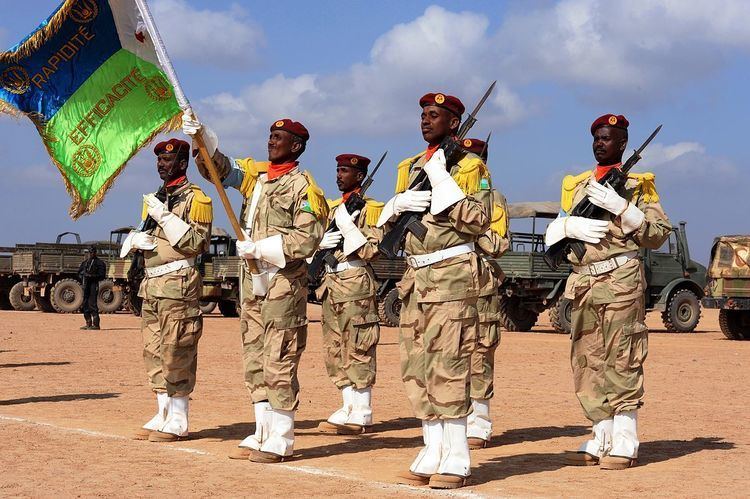Active 1977–present Size 16,000 (2016 est.) | Role Land warfare | |
 | ||
The Djiboutian Army is the largest branch of the Djibouti Armed Forces and is based in the Djiboutian capital of Djibouti City. Djibouti has upgraded its Ground Forces with advanced additions from domestic engineering and modifications. It must operate in mountainous and other rugged terrain, but it must do this without affecting the mechanized capability that is needed to confront regional forces. The official tasks of the armed forces include strengthening the country against external attack, maintaining border security. It is responsible for the defence of mainland Djibouti. During peacetime the military of Djibouti numbers approximately 9,000 with a reserve force of approximately 7,000
Contents
Overview
Djibouti has a smaller military than its neighbors. However, its security stops against foreign incursions. In reforming the Djiboutian Army, most of the available attention and financial resources have been directed to the development of the Land Forces. Clashes with the Eritrean Forces, in 2008, demonstrated the superior nature of the Djiboutian forces’ training and skills, but also highlighted the fact that the small military would be unable to counter the larger, if less well-equipped forces of its neighbours. The army has concentrated on mobility in its equipment purchases, suitable for patrol duties and counterattack but ill-suited for armoured war-fare. The 2008 border clashes at least temporarily swelled the ranks of the Djiboutian army, with retired personnel being recalled, but the military’s size and capabilities are much reduced since the 1990s. As a result of tensions with neighbors during the 1980s and early 2002, the Djiboutian Army refined existing strategic concepts and eventually formulated a plan to restructure its forces. Though wars were avoided, the threats from the 1980s and 2008 encouraged the army to address more effectively its major defense disadvantage: lack of strategic depth. Thus in the early 2000s it looked outward for a model of army organization that would best advance defensive capabilities by restructuring forces into smaller, more mobile units instead of traditional divisions. Over the years, Djiboutian Army has benefited from material and financial support of various countries such as France, Egypt, Saudi Arabia, Morocco and the United States. Currently, the amount allocated to defense represents the largest single entry in the country’s budget. During, and since, the Djiboutian–Eritrean border conflict the army has exploded in size from its peacetime size of between 6,000 and 10,000.
Organization
The Army has four military districts (the Tadjourah, Dikhil, Ali-Sabieh and Obock districts).
Its maneuver units are:
International mission
Djibouti has participated in international mission in Somalia and Sudan. There are 2,000 Djiboutian army personnel deployed abroad.
